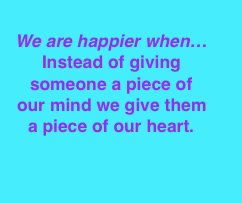Attachment
Emotional Connections Make Us Healthier
It turns out that when partners embrace their attachment needs they are happier.
Posted November 19, 2019 Reviewed by Gary Drevitch

Researchers have been taking a deep dive into the emotional needs of adults. This is changing beliefs around grown-up attachment needs. It seems that wanting deep connectedness with a partner is not a sign of immaturity, weakness, or (the dreaded) co-dependency. Instead, studies show our emotional needs are an integral and healthy part of our adult operating system and compel us to create secure attachments. This is important because loneliness can be as detrimental to our health as obesity or smoking 15 cigarettes are day.1
Sue Johnson’s 2 research and therapeutic model Emotionally Focused Therapy (EFT) confirms the need for adults in romantic relationships to trust their partner has their back and will come when called. Basically, to attach. Her book Hold Me Tight 3 guides couples in expressing these needs in loving ways without painful “dances” that involve criticizing, withdrawing, silence, and poking. Brené Brown 4 is removing the stigma and shame of vulnerability (see her Ted talk5), Dick Swartz’s 6 Internal Family Systems model helps our exiled and judged parts integrate and be Self-led, and the late Candace Pert 7 who produced more than 250 research articles explores how internal organs hold emotion.
The benefits of having a healthy secure attachment to one's romantic partner are clear and include:
- Having trusting, lasting relationships.
- The tendency to have good self-esteem.
- Comfort with sharing feelings with partners and friends.
- The ability to seek out social support. 8
According to John Bowlby 9, father of attachment theory, we all need these four characteristics of attachment:
- Proximity Maintenance. The desire to be near the people we are attached to.
- Safe Haven. Returning to the attachment figure for comfort and safety in the face of a fear or threat.
- Secure Base. The attachment figure acts as a base of security from which the child can explore the surrounding environment.
- Separation Distress. Anxiety that occurs in the absence of the attachment figure.10
Changing cultural norms and technology produces artistic diversity as seen in the works of Rembrandt, Chagall, Dali, Yayoi Kusama, and others, and knowledge of human nature evolves as well. The mores of the time, therapeutic skill, and resources such as education and research funding all contribute to advances in the field of psychology and expand our knowledge of human nature.
As a result, our understanding of our emotional needs evolves. We learn how to be more emotionally connected and relational.
Here’s an example you may relate to: You are feeling shut down from an interaction with your partner. You get courageous and say, “I felt hurt when you looked at your phone while I shared my hard day at work. I’m going to have dinner by myself.”
The other person (using reflective listening) might say, "Hon, I hear that you felt hurt when I looked at my phone and now you just want to be by yourself. I imagine you feel dismissed and ignored. Did I get you?” The hurt partner would probably say “yes", happy to get acknowledgement rather than defensiveness or being judged as “too” sensitive. But that acknowledgement wouldn’t really assuage their emotional distress. Their partner reflected their words and offered understanding of the emotions being felt, but missed their deeper, more complex emotional and somatic impact.
With an emotionally connected approach you “get into” the other’s feelings thru actual empathy, like this:
"Oh, hon, so you’re hurting and feeling really dismissed and unimportant because I didn’t stay focused on you as you shared an important and distressing part of your day. Reliving that work stress and bringing it to me probably made those vulnerable feelings come back and you hoped to get some comfort from me. Instead I stopped listening and looked at my phone. You must have felt worried in that moment and questioned whether you’re important to me. And now you don’t feel safe to be together tonight. Is that how it is? I'm sorry, it was careless of me to treat what you were saying so casually. What happens in your day matters to me.”
Then, the other might say, “Yes, I felt let down and worried that my day was less important to you than checking out a text. I get it, though: Notification sounds can be compelling and it’s easy to be distracted. Next time I have something important to tell you I’ll suggest we put our phones on silent so we can really be here for each other.”
Being open to your partner’s distress without explaining or getting defensive is validating and so it becomes safer for them to relax and know they are not alone.
Now, instead of an evening in separate rooms and maybe even separate beds, there’s a good chance the evening can progress with each person feeling that their “person” gets them and has their back. There's been a repair of the ruptured connection.
This kind of talking takes patience and practice. There can be a lot of shame in admitting we feel hurt. We are taught that adults are self-reliant and handle things on their own, and that doing otherwise is “co-dependent," so we can feel shy and awkward when admitting to needs that seem vulnerable and young.
Our head can offer benign reasons for hurtful behavior, but our gut doesn’t sooth by labeling feelings as insecure, needy, or weak. It needs connection to relax.
Exploring attachment needs can transform your relationship. Acknowledging vulnerable feelings can actually make your relationship stronger. A trained therapist who practices Emotionally Focused Therapy can help.
As Adam Dianner says: Have the courage to dare.
References
1) Holt-Lunstad, J., Smith, T.B., & Layton, J.B . (2010). Social relationships and mortality risk: a meta-analytic review. PLoS Medicine ,7(7 ), e1000316. doi:10.1371/journal.pmed.1000316.
4) https://brenebrown.comTED talk by Brené Brown
9) Bowlby [1,2,3] believed that how individuals are treated by significant others across the lifespan—especially during times of stress—shapes the expectations, attitudes, and beliefs they have about future partners and relationships. https://bit.ly/34YTvDC




